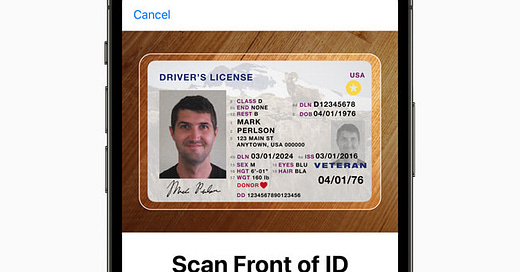What Apple's Secret DMV Contracts Tell Us
States Become De Facto Unpaid Service Providers to a $2.46 Trillion Company
Hey all, Jason here.
Would you pay for this newsletter?
Don’t worry, it’s not going behind a paywall. I’ve been writing this newsletter for just over a year now, and I’ve been pleased with the response it has gotten. But creating original, value-add reporting and analysis is a time-consuming endeavor. I’ve been reluctant to pursue a “freemium” strategy of…



